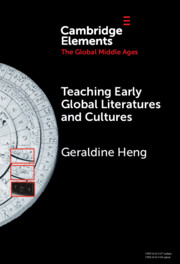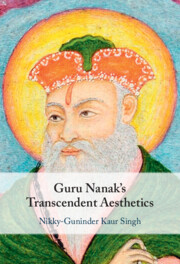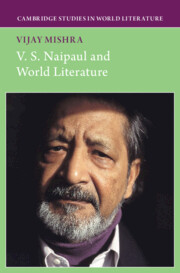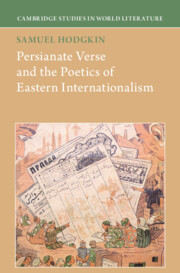Refine search
Actions for selected content:
108 results
20 - Aboriginal Song as Australian Poetry
-
-
- Book:
- The Cambridge History of Australian Poetry
- Published online:
- 19 November 2025
- Print publication:
- 11 December 2025, pp 376-399
-
- Chapter
- Export citation
Chapter 22 - ‘A curious creature from the market’
- from Part IV - Worlds of Print
-
-
- Book:
- African Literature in Transition
- Published online:
- 23 October 2025
- Print publication:
- 06 November 2025, pp 427-444
-
- Chapter
- Export citation
Reading Commodities
-
-
- Book:
- Commodities and Literature
- Published online:
- 14 October 2025
- Print publication:
- 09 October 2025, pp 1-28
-
- Chapter
- Export citation
Chapter 1 - Tea and the Silk Roads of World Literature
- from Part I - Origins
-
-
- Book:
- Commodities and Literature
- Published online:
- 14 October 2025
- Print publication:
- 09 October 2025, pp 31-46
-
- Chapter
- Export citation
Introduction
-
-
- Book:
- The Cambridge Companion to Modernist Theatre
- Published online:
- 28 August 2025
- Print publication:
- 11 September 2025, pp 1-18
-
- Chapter
-
- You have access
- HTML
- Export citation

Teaching Early Global Literatures and Cultures
-
- Published online:
- 05 May 2025
- Print publication:
- 29 May 2025
-
- Element
- Export citation
More of a Question than a Comment: A Response to Modernism, Empire, World Literature, by Joe Cleary
-
- Journal:
- Cambridge Journal of Postcolonial Literary Inquiry / Volume 11 / Issue 3 / September 2024
- Published online by Cambridge University Press:
- 20 February 2025, pp. 317-324
-
- Article
-
- You have access
- Open access
- HTML
- Export citation

Crime Fiction and Ecology
- From the Local to the Global
-
- Published online:
- 14 January 2025
- Print publication:
- 30 January 2025
-
- Element
- Export citation
Introduction
-
- Book:
- Insurgent Cultures
- Published online:
- 07 December 2024
- Print publication:
- 28 November 2024, pp 1-46
-
- Chapter
-
- You have access
- Open access
- HTML
- Export citation

Guru Nanak's Transcendent Aesthetics
-
- Published online:
- 21 November 2024
- Print publication:
- 21 November 2024
14 - The Poem as World
- from Part III - The Poem in the World
-
-
- Book:
- The Cambridge Companion to the Poem
- Published online:
- 30 May 2024
- Print publication:
- 06 June 2024, pp 230-248
-
- Chapter
- Export citation
Chapter 31 - Weltliteratur (World Literature)
- from Part V - World Cultures Inspiration and Reception
-
-
- Book:
- Goethe in Context
- Published online:
- 16 May 2024
- Print publication:
- 23 May 2024, pp 301-310
-
- Chapter
- Export citation
Chapter 1 - V. S. Naipaul Aesthetic Ideology and World Literature
-
- Book:
- V. S. Naipaul and World Literature
- Published online:
- 01 February 2024
- Print publication:
- 08 February 2024, pp 13-29
-
- Chapter
- Export citation
Introduction: Formations of the Literary Sovereign
-
- Book:
- Colonialism, World Literature, and the Making of the Modern Culture of Letters
- Published online:
- 19 January 2024
- Print publication:
- 08 February 2024, pp 1-50
-
- Chapter
- Export citation
Chapter 4 - Impure Aesthetics
- from Part II - Aesthetic Conventions
-
- Book:
- Colonialism, World Literature, and the Making of the Modern Culture of Letters
- Published online:
- 19 January 2024
- Print publication:
- 08 February 2024, pp 149-173
-
- Chapter
- Export citation

V. S. Naipaul and World Literature
-
- Published online:
- 01 February 2024
- Print publication:
- 08 February 2024

Colonialism, World Literature, and the Making of the Modern Culture of Letters
-
- Published online:
- 19 January 2024
- Print publication:
- 08 February 2024
Chapter 4 - Translations
-
- Book:
- Persianate Verse and the Poetics of Eastern Internationalism
- Published online:
- 14 December 2023
- Print publication:
- 21 December 2023, pp 131-164
-
- Chapter
- Export citation
Chapter 1 - Tribunes
-
- Book:
- Persianate Verse and the Poetics of Eastern Internationalism
- Published online:
- 14 December 2023
- Print publication:
- 21 December 2023, pp 35-66
-
- Chapter
- Export citation

Persianate Verse and the Poetics of Eastern Internationalism
-
- Published online:
- 14 December 2023
- Print publication:
- 21 December 2023
